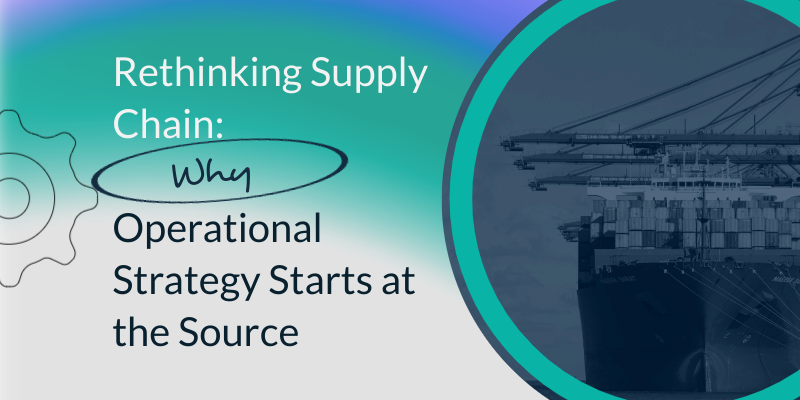The efficiency of last-mile delivery is critical to maintaining a competitive edge in today’s complex supply chain. Once considered merely the final hurdle in the logistics chain, last-mile delivery has evolved into a strategic differentiator for companies striving for exceptional customer satisfaction. As consumers increasingly demand faster and more reliable delivery options, businesses must adapt their strategies to meet these expectations.
This blog post offers an in-depth look at how businesses can optimize their internal and external supply chains for maximum efficiency, focusing on innovative last-mile delivery solutions. We will explore various technologies, such as route optimization software, real-time tracking systems, and the use of drones or autonomous vehicles. Additionally, we will discuss the importance of building strong partnerships with local courier services and leveraging data analytics to enhance decision-making processes. By implementing these strategies, businesses can not only improve their last-mile delivery efficiency but also enhance the overall customer experience and drive long-term loyalty.
The Importance of Last Mile Delivery
Last-mile delivery refers to the final step of the distribution process where goods are delivered from a transportation hub to the customer’s doorstep. It’s the most crucial part of the supply chain, directly impacting customer satisfaction and loyalty. With the rise of e-commerce, expectations for faster and more reliable deliveries have skyrocketed. Companies are under pressure to meet these demands while keeping costs in check and ensuring sustainability.
Efficient last-mile delivery can significantly enhance customer experience. A smooth and timely delivery fosters trust and encourages repeat purchases. Conversely, delays or missed deliveries can harm a company’s reputation and result in lost business. Hence, optimizing this aspect of the supply chain is not just beneficial but essential for growth.
The concept of last-mile delivery isn’t new, but its significance has grown with the proliferation of online shopping. Businesses must now innovate continuously to keep pace with changing consumer expectations and increased competition. It’s about finding the balance between speed, cost, and reliability while still delivering exceptional service.
Challenges in Last Mile Delivery
One of the primary challenges in last-mile delivery is managing costs. According to a report from Capgemini, last-mile delivery can account for over 50% of total shipping costs. This is due to the complexity and variability involved in delivering goods to individual addresses as opposed to centralized locations.
Another significant challenge is congestion and traffic in urban areas. With more vehicles on the road, particularly in major cities, delays are inevitable. This not only increases fuel consumption but also impacts delivery schedules and customer satisfaction.
Finally, there’s the issue of failed deliveries. Missed deliveries are both costly and frustrating for businesses and customers. They require additional time and resources to rectify, often leading to increased operational costs and negatively impacting the customer experience.
Leveraging Technology for Better Efficiency
Technology plays a pivotal role in addressing these challenges. Route optimization software, for instance, helps in planning the most efficient paths for delivery vehicles, reducing travel time and fuel consumption. It also adapts in real-time to factors like traffic and weather conditions, ensuring timely deliveries.
Automated delivery notifications keep customers informed about the status of their deliveries. This transparency helps manage expectations and reduces the chances of missed deliveries, as customers can plan to be available at the delivery time.
Furthermore, drones and autonomous vehicles are emerging technologies that promise to revolutionize last-mile delivery. While still in the trial stages for many companies, they offer a glimpse into a future where deliveries are faster, more efficient, and less reliant on traditional methods.
Optimizing Internal Supply Chains
Internal supply chains are the backbone of last-mile delivery. Ensuring they are as efficient as possible is crucial. This involves streamlining operations, maintaining clear communication between departments, and utilizing data for decision-making.
Inventory management is a key component. By using predictive analytics, businesses can better anticipate demand and ensure that stock levels are optimized. This reduces the risk of stockouts or overstocking, both of which can disrupt the delivery process.
Additionally, regular training and development for staff can improve overall efficiency. Employees who are well-versed in the latest technologies and processes are better equipped to handle challenges and maximize productivity.
Collaborating with External Partners
Many businesses rely on third-party logistics (3PL) providers to handle last-mile deliveries. Choosing the right partners is crucial for maintaining service quality and efficiency. It’s important to work with providers who share your commitment to customer satisfaction and can scale with your business needs.
Establishing clear communication channels with external partners ensures that any issues are quickly addressed. Regular performance reviews can help in maintaining high standards and identifying areas for improvement.
Collaboration shouldn’t be limited to logistics providers. Working with local businesses for support services, such as call centers or customer service representatives, can enhance the delivery experience and provide valuable local insights.
Sustainability in Last Mile Delivery
Sustainability is becoming a critical consideration in supply chain management. Many consumers are concerned about the environmental impact of their purchases, and businesses must respond by implementing eco-friendly practices.
Electric delivery vehicles and bicycles are gaining popularity as sustainable alternatives to traditional diesel trucks in urban areas. These options not only reduce carbon emissions but also lower operating costs in the long run.
Packaging is another area where businesses can make a difference. Using recyclable or biodegradable materials minimizes waste and appeals to environmentally conscious consumers. Small changes in packaging design can also lead to significant reductions in material usage and shipping costs.
The Role of Data Analytics
Data is a powerful tool in optimizing last-mile delivery. By collecting and analyzing data from various sources, businesses can gain insights into customer preferences, delivery patterns, and operational inefficiencies.
Predictive analytics can be used to forecast demand and improve inventory management. This ensures that products are available when and where they’re needed, reducing the likelihood of delays and customer dissatisfaction.
Real-time data allows for quick decision-making and problem-solving. If a delivery is delayed, data analytics can help identify the cause and suggest alternative solutions, minimizing disruption and maintaining service quality.
Enhancing Customer Experience
A seamless last-mile delivery experience is crucial for customer satisfaction. Providing multiple delivery options gives customers flexibility and control over how and when they receive their purchases.
Offering same-day or next-day delivery can be a significant competitive advantage. However, it’s important to ensure that these services are sustainable and do not compromise overall service quality.
Customer feedback is invaluable for continuous improvement. Encouraging customers to share their experiences and suggestions helps businesses identify areas for enhancement and build stronger relationships.
Building a Resilient Supply Chain
Resilience is absolutely key to effectively navigating the complexities of last-mile delivery, which is often regarded as the most challenging segment of the supply chain. In this dynamic environment, businesses must be fully prepared to adapt to a variety of unforeseen challenges, such as natural disasters, labor strikes, or global pandemics that can disrupt logistics and delay deliveries.
To effectively mitigate these risks, developing comprehensive contingency plans is crucial. This includes not only anticipating potential disruptions but also diversifying supply sources to ensure that operations can continue even when specific suppliers are unable to fulfill their obligations. Establishing relationships with multiple carriers and logistics partners can provide alternatives in times of crisis, ensuring that customer needs are met without significant delays.
Moreover, regularly reviewing and updating these contingency plans is essential for maintaining an organization’s resilience. This process involves assessing the effectiveness of existing strategies, identifying new potential risks, and incorporating lessons learned from past disruptions. By staying proactive, businesses can better prepare for the unexpected.
Investing in a robust IT infrastructure complemented by strong cybersecurity measures is another critical aspect of resilience in last-mile delivery. Protecting against data breaches and system failures is vital to preventing disruptions that can compromise not only operational efficiency but also customer trust. A reliable IT system ensures that order tracking, inventory management, and communication channels remain intact, allowing businesses to respond swiftly to any issues that arise, thus fostering customer confidence in their services. In today’s increasingly digital landscape, prioritizing these investments is essential for sustaining long-term success.
Case Studies of Successful Last Mile Strategies
Learning from industry leaders can provide valuable insights into effective last-mile strategies. Amazon, for example, has set the standard for fast and reliable deliveries with its Prime service. By investing in technology and infrastructure, they have optimized their supply chain to deliver exceptional service.
Similarly, Walmart’s use of in-store pickup and local delivery services has allowed them to compete with online giants while leveraging their extensive physical retail network.
These examples demonstrate the importance of innovation, investment, and adaptability in achieving last-mile delivery success.
The Future of Last Mile Delivery
The future of last-mile delivery is exciting, with advancements in technology and changes in consumer expectations driving continuous evolution. Businesses must stay ahead of emerging trends and be willing to adapt to remain competitive.
Personalization will play a larger role, with AI and machine learning enabling tailored delivery experiences based on individual preferences. This will require businesses to invest in data analytics and customer relationship management systems.
Ultimately, the focus will remain on providing efficient, reliable, and sustainable delivery solutions that meet the needs of consumers and support business growth.
Conclusion
Mastering the art of last-mile delivery is essential for businesses looking to thrive in today’s competitive landscape. By optimizing internal and external supply chains, leveraging technology, and prioritizing customer experience, companies can achieve greater efficiency and success.







